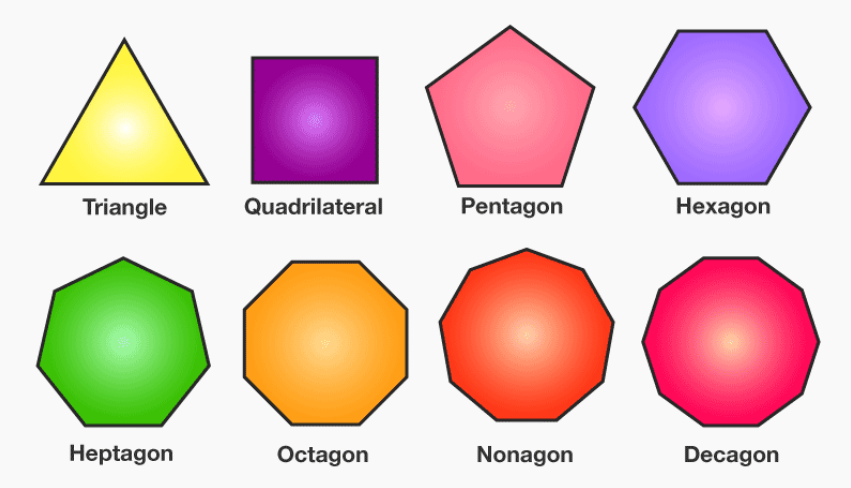Read: 7 min 52 sec
10 October, 2022

The pentagon shape is one of the most iconic shapes in the world. It’s found in everything from corporate logos to military emblems, and its five-sided form has been used to represent a myriad of different ideas and concepts. But what exactly does the pentagon shape mean? Here, we’ll explore the various meanings behind this distinctive shape.
Most people are familiar with the Pentagon building in Washington D.C., but few know why it was built in the shape of a pentagon. The building was originally designed as part of President Franklin Roosevelt’s New Deal program to reduce unemployment during the Great Depression. The building was meant to serve as a symbol of America’s strength and resiliency during a difficult time, and its five-pointed structure was chosen to reflect that sense of unity and stability. Today, it serves as headquarters for the Department of Defense, which only further cements its status as a symbol of American power and influence around the world.
The pentagon shape carries numerous other symbolic meanings beyond its use as a representation of American strength. For example, it can be seen as a symbol of balance due to its five equal sides. It can also be seen as representing harmony between different elements or forces, such as when it’s used in corporate logos or other designs that feature multiple elements that need to work together harmoniously for success. The shape can even be used to represent human emotions like joy or sorrow; depending on how you look at it, it could suggest either an embrace or an explosion outward from a single point.
The pentagon also has many mathematical properties associated with it that make it an interesting choice for various applications. For example, when two regular pentagons are placed side by side they form an octagon with ten equal sides; this is often referred to as the “pentagonal number theorem” or “pentadactyl theorem” among mathematicians and geometry enthusiasts alike. Furthermore, if you draw out all 12 possible lines connecting each corner of a regular pentagon you will get 24 triangles within that same shape—this is known as “the theorem on triangulation” within geometry circles!
The pentagon shape has come to represent much more than just the iconic building located in Washington D.C.. From symbolism about balance and harmony to fascinating mathematical properties – there is much more than meets the eye when looking at this particular geometric figure! Whether you use it for everyday design applications or find yourself fascinated by its inner workings – understanding why this particular five-sided figure holds so much meaning is sure to bring you closer appreciation for these unique shapes!
Have you ever wondered what a five-sided shape looks like? Although it may seem like an unusual shape, the five-sided shape is actually quite common in nature. In this blog post, we will explore the properties of a five-sided shape and learn about its most famous example – the pentagon.
A five-sided shape is known as a “pentagon”. It has five sides that are all equal in length and five angles that are all equal in size. All of these sides and angles form a perfect circle when they come together. This means that if you were to draw a pentagon on paper, it would look like a circle with four points sticking out from it.
The most famous example of a pentagon is undoubtedly the Pentagon Building in Washington D.C., United States of America. This building was built in 1941 as the headquarters for the Department of Defense for the USA and its allies during World War II. The building was designed by architect George Bergstrom, who chose to make it have five sides because he believed this was more aesthetically pleasing than having four or six sides. The Pentagon Building stands today as one of America’s most recognizable monuments and is also widely regarded as one of the best examples of modern architecture in America.
Five sided shapes are not just used for buildings; they can be found everywhere! From street signs to traffic lights to geometrical shapes used in mathematics classes – pentagons can be seen just about everywhere! They are also commonly used in construction projects such as bridges and tunnels, where their unique properties make them perfect for providing stability and strength to structures while keeping them looking visually appealing at the same time.
In conclusion, we have learned that there is more to a five sided shape (also known as a “pentagon”) than meets the eye! Not only do they have unique mathematical properties, but they can also be used in construction projects to provide stability and strength while keeping structures looking visually appealing at the same time! So next time you see something with five sides on it – take another look – you might just find yourself looking at an interesting example of geometry!

The pentagon is one of the most recognizable shapes in the world. Its sharp angles and distinct corners are easily spotted in architecture, maps, and everyday items. But how many sides does this shape actually have? Let’s take a closer look to find out.
A pentagon is a five-sided polygon, meaning it has five straight sides and five angles. Each angle forms an internal angle of 108°, which means that if you add up all the internal angles they will equal 540°. The sides can be any length; however, they must all be equal in order for the shape to be considered a true pentagon. In addition, it should have five vertices (corner points) and ten edges (lines connecting each vertex).
The term “pentagon” was first used by Euclid in his book Elements written around 300 BC. He stated that “a plane figure is said to have been constructed according to a certain ratio when it contains five points such that from any one point two lines drawn to the other four points contain the same ratio with one another as do those joining any two points among themselves”. This book was written before there were actual words for each shape so he simply described them mathematically instead.
In modern times, the most famous pentagon is located in Arlington County, Virginia and serves as home to the US Department of Defense—hence its name “the Pentago” or “the Pentagon”. This building is also known for having five sides that are exactly equal in length and having interior angles of 108° each!
The pentagon is an iconic shape with many uses throughout history and today! It has five sides, each side forming an interior angle of 108° and all sides being equal length. From geometry books to military buildings, this unique shape continues to delight us with its timeless beauty! Whether you’re trying to figure out how many sides a pentagon has or just admiring its beauty—now you know everything there is to know about this fascinating shape!
If you’ve ever taken a geometry class, you may have heard about the five-sided polygon known as a regular pentagon. But what exactly is a regular pentagon? In this blog post, we’ll be exploring the structure and properties of this fascinating shape.
A regular pentagon is defined as a five-sided polygon in which all of the sides are equal in length and all of the angles are equal in measure. In other words, each side of the pentagon is congruent to every other side and each angle measures 108 degrees. This means that when two straight lines meet at one point (an angle), they form an angle of 108 degrees throughout the entire shape. As with any polygon, the sum of all angles must add up to 360 degrees; thus, each internal angle of a regular pentagon will always measure 108 degrees. The same can be said for its exterior angles, which together measure 540 degrees (360 + 180).
A regular pentagon also has certain properties that make it unique among polygons. For instance, it has five lines of symmetry—meaning that if you draw a line from one vertex to another and then reflect it over that line, both halves will be congruent. Similarly, its diagonals (lines connecting non-adjacent vertices) intersect at their midpoints so that they divide each other into two equal parts. All these factors come together to make the regular pentagon an interesting shape with some truly remarkable features!
From its symmetrical design to its congruent sides and angles, there’s no denying that the regular pentagon is an intriguing shape with some unique features. By understanding its structure and properties, we can better appreciate why this five-sided polygon has become such an important part in mathematics today. Whether you’re studying geometry or just curious about shapes in general, learning more about the regular pentagon is sure to broaden your knowledge!